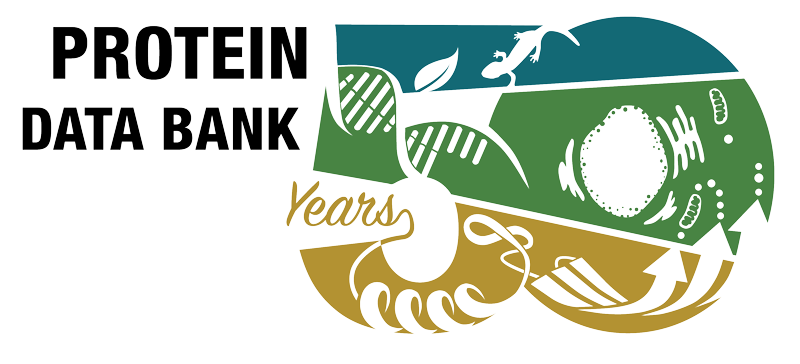Articles - 4v6a mentioned but not cited (3)
- Essential structural elements in tRNA(Pro) for EF-P-mediated alleviation of translation stalling. Katoh T, Wohlgemuth I, Nagano M, Rodnina MV, Suga H. Nat Commun 7 11657 (2016)
- Mapping surface residues of eIF5A that are important for binding to the ribosome using alanine scanning mutagenesis. Barbosa NM, Boldrin PE, Rossi D, Yamamoto PA, Watanabe TF, Serrão VH, Hershey JW, Fraser CS, Valentini SR, Zanelli CF. Amino Acids 48 2363-2374 (2016)
- Pseudouridine modifications influence binding of aminoglycosides to helix 69 of bacterial ribosomes. Sakakibara Y, Chow CS. Org Biomol Chem 15 8535-8543 (2017)
Reviews citing this publication (38)
- The elongation, termination, and recycling phases of translation in eukaryotes. Dever TE, Green R. Cold Spring Harb Perspect Biol 4 a013706 (2012)
- Functional significance of eIF5A and its hypusine modification in eukaryotes. Park MH, Nishimura K, Zanelli CF, Valentini SR. Amino Acids 38 491-500 (2010)
- Functional complexity and regulation through RNA dynamics. Dethoff EA, Chugh J, Mustoe AM, Al-Hashimi HM. Nature 482 322-330 (2012)
- Structure and dynamics of a processive Brownian motor: the translating ribosome. Frank J, Gonzalez RL. Annu Rev Biochem 79 381-412 (2010)
- Mechanisms of ribosome rescue in bacteria. Keiler KC. Nat Rev Microbiol 13 285-297 (2015)
- The bacterial translation stress response. Starosta AL, Lassak J, Jung K, Wilson DN. FEMS Microbiol Rev 38 1172-1201 (2014)
- The translation factor eIF5A and human cancer. Mathews MB, Hershey JW. Biochim Biophys Acta 1849 836-844 (2015)
- Translation Elongation and Recoding in Eukaryotes. Dever TE, Dinman JD, Green R. Cold Spring Harb Perspect Biol 10 a032649 (2018)
- The hypusine-containing translation factor eIF5A. Dever TE, Gutierrez E, Shin BS. Crit Rev Biochem Mol Biol 49 413-425 (2014)
- Ribosome pausing, arrest and rescue in bacteria and eukaryotes. Buskirk AR, Green R. Philos Trans R Soc Lond B Biol Sci 372 20160183 (2017)
- Update on designing and building minimal cells. Jewett MC, Forster AC. Curr Opin Biotechnol 21 697-703 (2010)
- Strategies to ameliorate abiotic stress-induced plant senescence. Gepstein S, Glick BR. Plant Mol Biol 82 623-633 (2013)
- Ribosome structure and dynamics during translocation and termination. Dunkle JA, Cate JH. Annu Rev Biophys 39 227-244 (2010)
- Stall no more at polyproline stretches with the translation elongation factors EF-P and IF-5A. Lassak J, Wilson DN, Jung K. Mol Microbiol 99 219-235 (2016)
- tmRNA-mediated trans-translation as the major ribosome rescue system in a bacterial cell. Himeno H, Kurita D, Muto A. Front Genet 5 66 (2014)
- New structural insights into the decoding mechanism: translation infidelity via a G·U pair with Watson-Crick geometry. Demeshkina N, Jenner L, Westhof E, Yusupov M, Yusupova G. FEBS Lett 587 1848-1857 (2013)
- Single ribosome dynamics and the mechanism of translation. Aitken CE, Petrov A, Puglisi JD. Annu Rev Biophys 39 491-513 (2010)
- Non-canonical roles of tRNAs and tRNA mimics in bacterial cell biology. Katz A, Elgamal S, Rajkovic A, Ibba M. Mol Microbiol 101 545-558 (2016)
- The roles of RNA in the synthesis of protein. Moore PB, Steitz TA. Cold Spring Harb Perspect Biol 3 a003780 (2011)
- Experimental and computational determination of tRNA dynamics. Alexander RW, Eargle J, Luthey-Schulten Z. FEBS Lett 584 376-386 (2010)
- Unique modifications of translation elongation factors. Greganova E, Altmann M, Bütikofer P. FEBS J 278 2613-2624 (2011)
- eIF5A and EF-P: two unique translation factors are now traveling the same road. Rossi D, Kuroshu R, Zanelli CF, Valentini SR. Wiley Interdiscip Rev RNA 5 209-222 (2014)
- The task force that rescues stalled ribosomes in bacteria. Giudice E, Gillet R. Trends Biochem Sci 38 403-411 (2013)
- tRNA mimicry in translation termination and beyond. Nakamura Y, Ito K. Wiley Interdiscip Rev RNA 2 647-668 (2011)
- Elongation factor P mediates a novel post-transcriptional regulatory pathway critical for bacterial virulence. Zou SB, Roy H, Ibba M, Navarre WW. Virulence 2 147-151 (2011)
- Ribosome rescue systems in bacteria. Himeno H, Nameki N, Kurita D, Muto A, Abo T. Biochimie 114 102-112 (2015)
- The ribosome as a versatile catalyst: reactions at the peptidyl transferase center. Rodnina MV. Curr Opin Struct Biol 23 595-602 (2013)
- Functions and Regulation of Translation Elongation Factors. Xu B, Liu L, Song G. Front Mol Biosci 8 816398 (2021)
- Crystal structure of eukaryotic ribosome and its complexes with inhibitors. Yusupova G, Yusupov M. Philos Trans R Soc Lond B Biol Sci 372 20160184 (2017)
- Elongation Factor P and the Control of Translation Elongation. Rajkovic A, Ibba M. Annu Rev Microbiol 71 117-131 (2017)
- The paradox of elongation factor 4: highly conserved, yet of no physiological significance? Zhang D, Qin Y. Biochem J 452 173-181 (2013)
- Translation elongation factor P (EF-P). Hummels KR, Kearns DB. FEMS Microbiol Rev 44 208-218 (2020)
- Cancer chemoprevention locks onto a new polyamine metabolic target. Gerner EW. Cancer Prev Res (Phila) 3 125-127 (2010)
- Polyamines as Quality Control Metabolites Operating at the Post-Transcriptional Level. Poidevin L, Unal D, Belda-Palazón B, Ferrando A. Plants (Basel) 8 E109 (2019)
- Hydroxylation and translational adaptation to stress: some answers lie beyond the STOP codon. Katz MJ, Gándara L, De Lella Ezcurra AL, Wappner P. Cell Mol Life Sci 73 1881-1893 (2016)
- Genome Expansion by tRNA +1 Frameshifting at Quadruplet Codons. Gamper H, Masuda I, Hou YM. J Mol Biol 434 167440 (2022)
- Engineering tRNAs for the Ribosomal Translation of Non-proteinogenic Monomers. Sigal M, Matsumoto S, Beattie A, Katoh T, Suga H. Chem Rev 124 6444-6500 (2024)
- Tuning tRNAs for improved translation. Weiss JL, Decker JC, Bolano A, Krahn N. Front Genet 15 1436860 (2024)



 PMID:
PMID: 